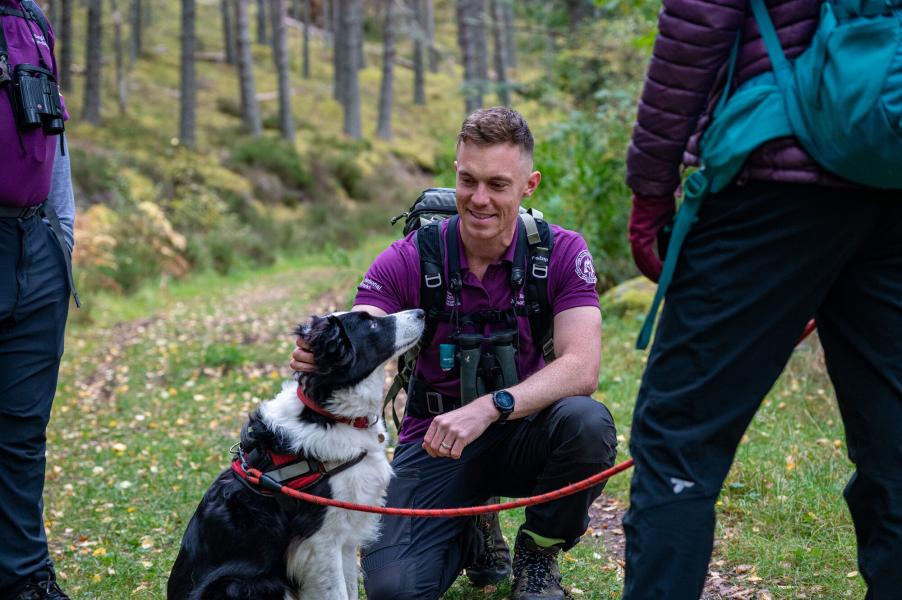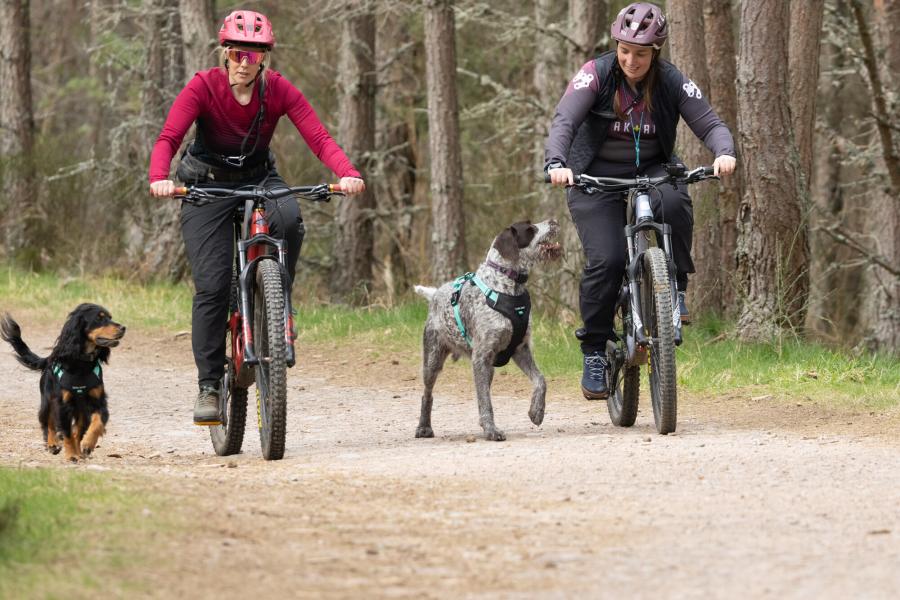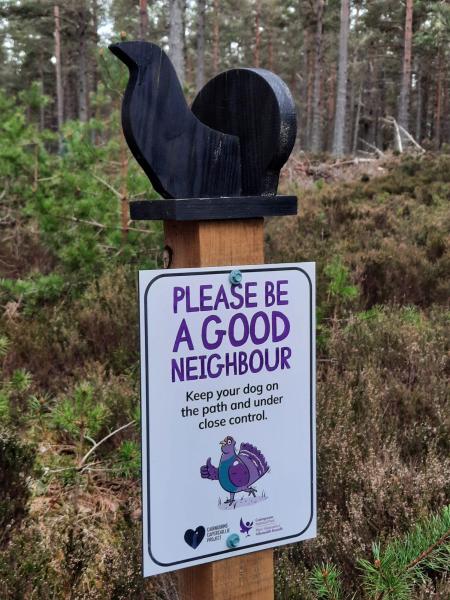Visiting with your dog
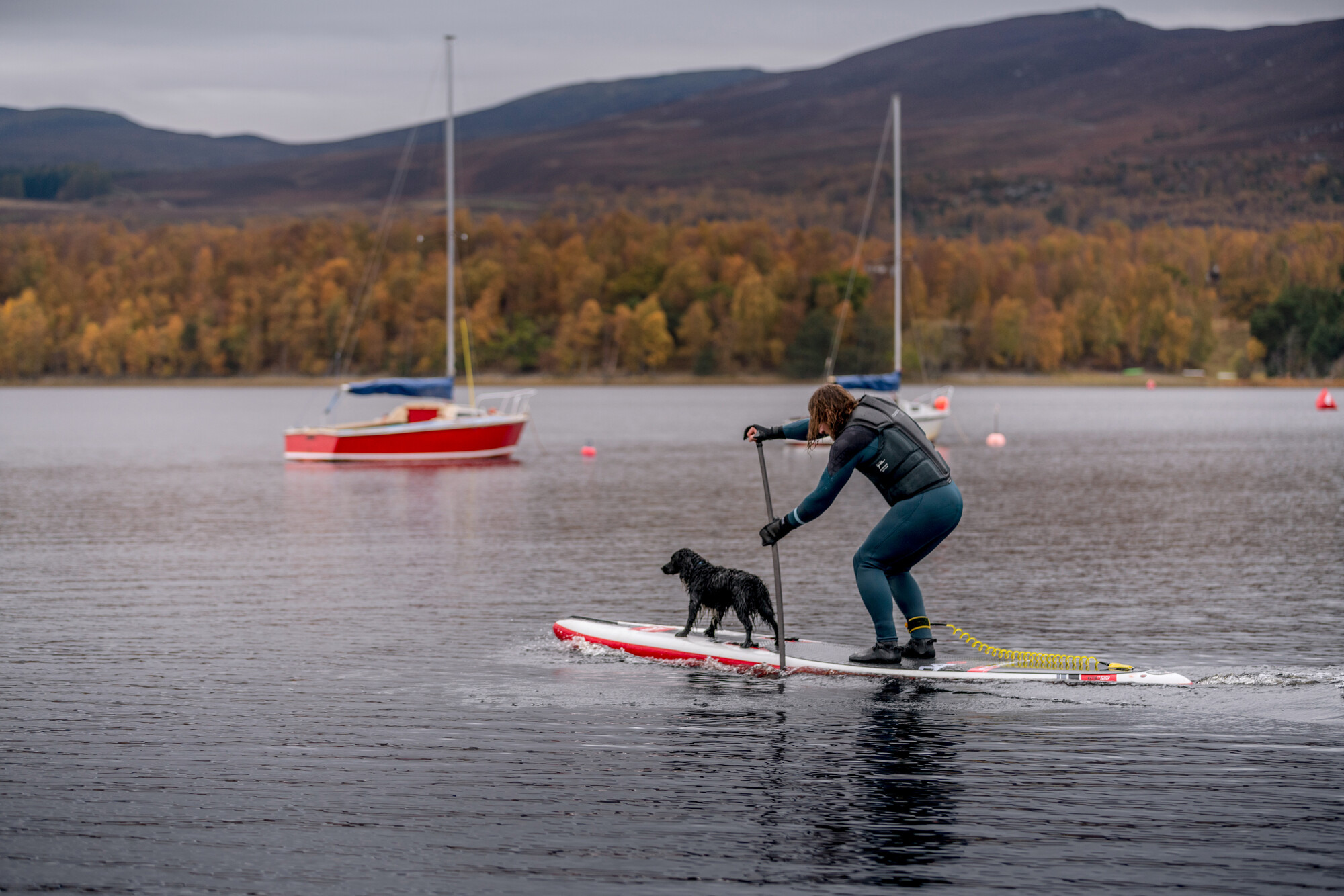
Dogs are very welcome guests in the National Park, and they’ll love exploring our stunning landscapes, sniffing through our woodlands or dipping a paw into our glistening lochs.
There are lots of wonderful walks and places to discover with your canine companion, including dog-friendly cafés to enjoy a cuppa and dog treat in too.
Take the Lead
We ask all visitors to the National Park to help us protect and conserve what makes this place so special, and for dog owners this means always “taking the lead” - literally and figuratively!
The Cairngorms is home to rare and endangered species and without meaning to dogs can potentially disturb and scare animals. If this happens during the breeding season it can be quite serious, especially for ground nesting birds that when startled, will fly off and leave their young chicks exposed and at risk from being taken by a predator or succumbing to the cold. During the bird breeding season (usually April - August) please keep your dog on a short lead or under close control in areas where there are likely to be breeding birds such as woodlands, moorland and loch shores.
In areas where protected birds are present - like the majestic Capercaillie, one of the rarest and most threatened birds in the UK, you might see signs to make you aware they are around and asking you to walk your dog on a lead during the breeding season.
Dog owners should always ‘take the lead’ in being responsible for their dogs. Our dogs don’t know any better and doggy instincts can take over in the blink of an eye, especially in a new and stimulating environment, so always make sure your dog is in sight and under close control – if in doubt, use a lead.
Lots of our lovely walks also cross farmland areas, so always be aware that there might be sheep or cattle around the next corner.
Here are a few pointers to keep yourself, your dog and farm animals safe:
- Walk your dog on a short lead or close to heel in areas with ground-nesting birds or livestock.
- Where possible, try to choose routes that avoid going into enclosed fields.
- Keep as far away from farm animals as possible.
- Do not enter fields with young animals in lambing season.
- If cattle react aggressively toward you and your dog, let the dog go and take the shortest, safest route out of the field.
- Clean up after your dog and put any waste in a bin. In more remote areas take it away with you or remove it off the path.
Whether you and your dog are heading for a village stroll, a riverside ramble (and splash!), a woodland sniff-fest or a longer paw pounding hike please follow the above advice, taken from the Scottish Outdoor Access Code, and don’t forget to pocket the essentials – your dog’s lead, training treats and poo bags. For longer days out you might also pack a water bowl, spare lead and of course extra dog snacks!
Keeping your dog safe
Dog walks in the National Park can be a wonderful experience and there is nothing better than exploring with your four-legged friend by your side. Here’s a few things to think about before heading out to ensure you and your dog are prepared and can have a safe, enjoyable and memorable adventure:
- If you are visiting an area you are not familiar with, take extra care to keep your dog in sight and under close control, if in doubt walk them on a lead. Nobody wants their dog to get lost or to run into a dangerous situation.
- Keep a tick tool handy. Ticks are small (1mm – 1cm) biting bugs that attach to your dog’s skin (and humans too!), check your dog for ticks after your walk and remove any you find using a tick tool. Find more ticks on dogs advice here.
- Be aware that adders are found in the National Park. They are most active in the spring and early summer and are most commonly found on rocky hillsides and moorland. Although rare, dogs can be bitten by adders, usually when a snake is stepped on or disturbed. Adder bites can be very serious; ensure you know what to do in case your dog gets bitten and always take them to a vet as soon as possible. Find more advice on dogs and adders here.
- If your dog is a mountaineering mutt, make sure you understand the signs of hypothermia in dogs and don’t forget to put their jacket and extra water in your pack. Scotland is known for its weather changes so be prepared, especially in winter. Find more advice about taking your dog hill walking here.
Local vets
If the worst happens and your dog needs some medical help, there are veterinary practices across the National Park that can assist.
Cairngorm Vets - Grantown-on-Spey
- Visit the Cairngorm Vets website
- By phone on +44 (0) 1479 816 750
Strathspey Vets - Aviemore and Grantown-on-Spey
- Visit the Strathspey Vets website
- By phone on +44 (0) 1479 872 252
Morven Vets - Ballater
- Visit the Morven Vets website
- By phone on +44 (0) 1975 562 339
Heartland Vets - Pitlochry
- Visit the Heartland Vets website
- By phone on +44 (0) 1796 472 201
Thrums Vets - Kirriemuir (Angus glens)
- Visit the Thrums Vets website
- By phone on +44 (0) 1575 752 643
Featured
Wildlife
The Cairngorms National Park is home to a quarter of the UK’s rare and endangered species. Its rich habitats are a haven for an array of wildlife, from iconic birds to elusive plants and flowers.
Wildfire management
As the climate changes, the risk of wildfires is ever more present in our daily lives and in a National Park, a wildfire has the potential to be devastating.
What we do
From pioneering conservation projects to community engagement and active travel, find out more about the range of work happening across the National Park.
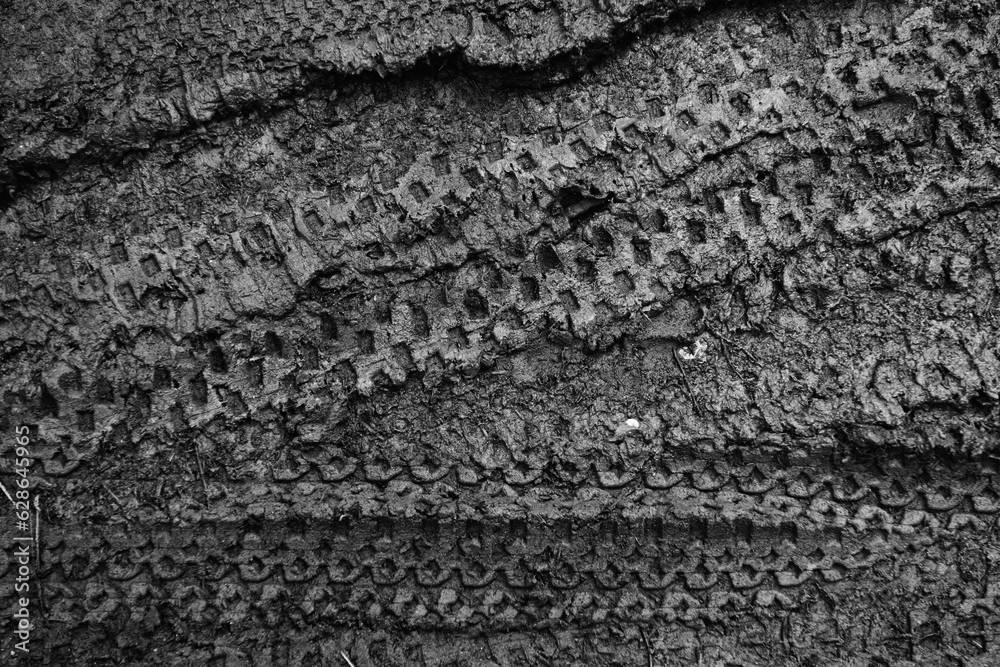
Scottish Outdoor Access Code
Find out how you can be a responsible dog owner in the Cairngorms National Park.





